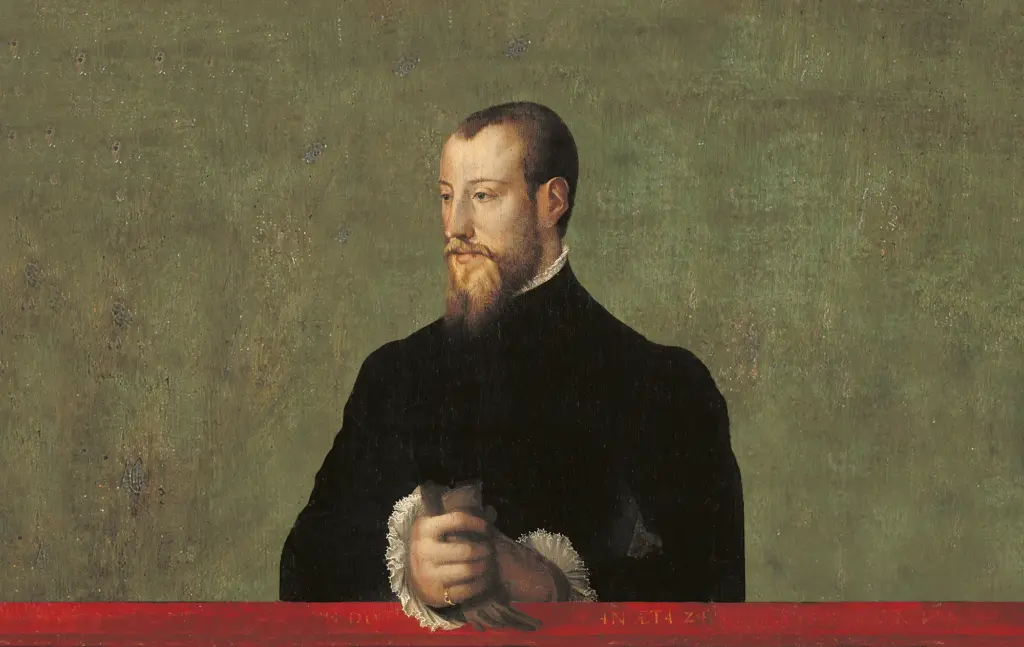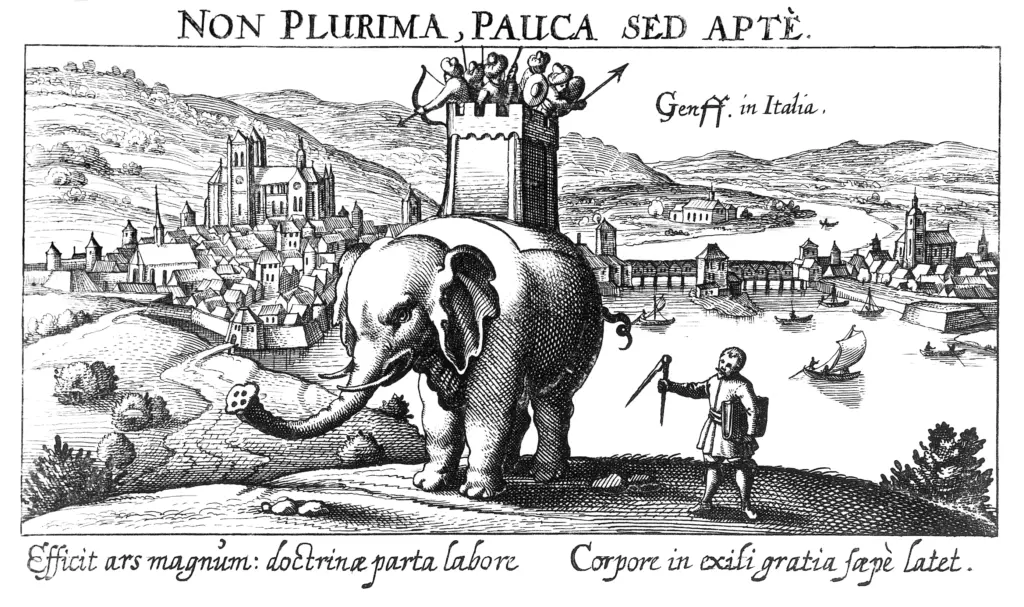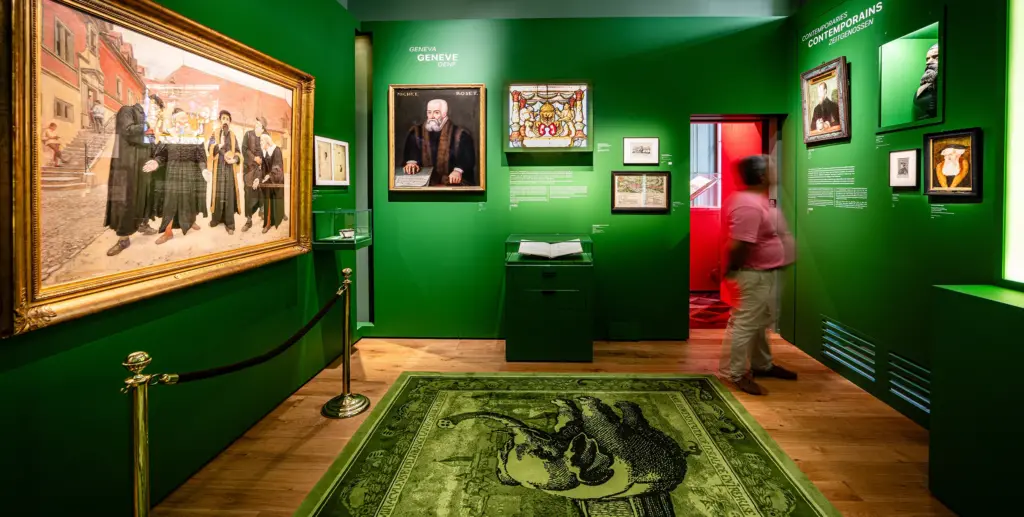John Calvin and Geneva are inseparable. During the 26 years he spent there, Calvin had a major influence on the city. Thanks in part to his efforts, the Reformation spread from Geneva throughout Europe and then the rest of the world. He wrote some of his major works there, delivered thousands of sermons, set up an academy and developed a church structure that is still widely used today.
This room presents four portraits of Calvin: one made by a student during a class, and the others by the painters Joseph Hornung, Albert Anker and Ferdinand Hodler. Hodler’s painting shows Calvin in the courtyard of the Geneva school that now bears his name. Geneva is represented in this room by the large portrait of Michel Roset, the leader of a city buffeted by religious, demographic and cultural upheavals.
You’ll also see several rare portraits of important contemporary figures. These include reformers Théodore de Bèze, Guillaume Farel and Pierre Viret, as well as some of their opponents. There’s a portrait of Michel Servet, for example, and a moving letter that he penned in his cell a few weeks before his execution. Nearby hangs a portrait of Sébastien Castellion who, from Basel, decried Servet’s execution and the role played in it by Calvin, his former mentor.
This room also holds first editions of both the first and final versions of Calvin’s most important work – Institutes of the Christian Religion. This book is considered one of the most important works in the Protestant tradition.
Understanding the Reformation through augmented reality
Fifteen major works across the permanent exhibition are brought to life with the help of augmented reality, helping you better understand their context and history. Check out our enhanced version, below, of the painting Calvin and the Professors in the Courtyard of Geneva College by Swiss painter Ferdinand Hodler. ©Museum of Art and History






